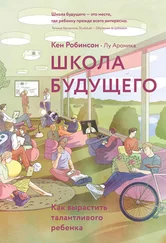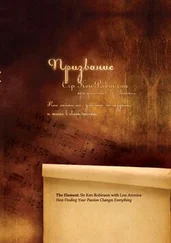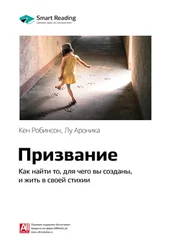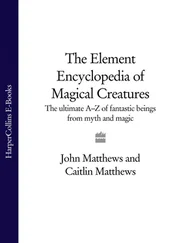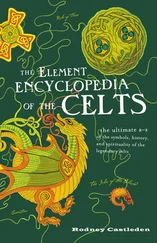Кен Робинсон - The Element
Здесь есть возможность читать онлайн «Кен Робинсон - The Element» весь текст электронной книги совершенно бесплатно (целиком полную версию без сокращений). В некоторых случаях можно слушать аудио, скачать через торрент в формате fb2 и присутствует краткое содержание. Год выпуска: 2009, ISBN: 2009, Издательство: Penguin Books Ltd, Жанр: Самосовершенствование, на английском языке. Описание произведения, (предисловие) а так же отзывы посетителей доступны на портале библиотеки ЛибКат.
- Название:The Element
- Автор:
- Издательство:Penguin Books Ltd
- Жанр:
- Год:2009
- ISBN:9780141911250
- Рейтинг книги:3 / 5. Голосов: 1
-
Избранное:Добавить в избранное
- Отзывы:
-
Ваша оценка:
- 60
- 1
- 2
- 3
- 4
- 5
The Element: краткое содержание, описание и аннотация
Предлагаем к чтению аннотацию, описание, краткое содержание или предисловие (зависит от того, что написал сам автор книги «The Element»). Если вы не нашли необходимую информацию о книге — напишите в комментариях, мы постараемся отыскать её.
The Element — читать онлайн бесплатно полную книгу (весь текст) целиком
Ниже представлен текст книги, разбитый по страницам. Система сохранения места последней прочитанной страницы, позволяет с удобством читать онлайн бесплатно книгу «The Element», без необходимости каждый раз заново искать на чём Вы остановились. Поставьте закладку, и сможете в любой момент перейти на страницу, на которой закончили чтение.
Интервал:
Закладка:
In his book The Luck Factor , psychologist Richard Wiseman writes about his study of four hundred exceptionally “lucky” and “unlucky” people. He found that those who considered themselves lucky tended to exhibit similar attitudes and behaviors. Their unlucky counterparts tended to exhibit opposite traits.
Wiseman has identified four principles that characterize lucky people. Lucky people tend to maximize chance opportunities. They are especially adept at creating, noticing, and acting upon these opportunities when they arise. Second, they tend to be very effective at listening to their intuition, and do work (such as meditation) that is designed to boost their intuitive abilities. The third principle is that lucky people tend to expect to be lucky, creating a series of self‐fulfilling prophecies because they go into the world anticipating a positive outcome. Last, lucky people have an attitude that allows them to turn bad luck to good. They don’t allow ill fortune to overwhelm them, and they move quickly to take control of the situation when it isn’t going well for them.
Dr. Wiseman performed an experiment that speaks to the role of perception in luck. He set up a nearby café with a group of actors told to behave the way people normally did in that setting. He also put a five‐pound note on the sidewalk just outside the café. He then asked one of his “lucky” volunteers to go down to the shop. The lucky person saw the money on the ground, picked it up, walked into the shop, and ordered a coffee for himself and the stranger at the next chair. He and the stranger struck up a conversation and wound up exchanging contact information.
Next, Dr. Wiseman sent one of his “unlucky” volunteers to the café. This person stepped right over the five‐pound note, bought coffee, and interacted with no one. Later, Wiseman asked both subjects if anything lucky happened that day. The lucky subject talked about finding the money and making a new contact. The unlucky subject couldn’t think of anything.
One way of opening ourselves up to new opportunities is to make conscious efforts to look differently at our ordinary situations. Doing so allows a person to see the world as one rife with possibility and to take advantage of some of those possibilities if they seem worth pursuing. What Robbins and Wiseman show us is that if we keep our focus too tight, we miss the rest of the world swirling around us.
Another attitude that leads to what many of us would consider “good luck” is the ability to reframe, to look at a situation that fails to go according to plan and turn it into something beneficial.
If things had worked out differently, there is a very good chance that I would not be writing this book at all now and you would therefore not be reading it. I might be running a sports bar in England and regaling anyone who’d listen with tales of my glittering soccer career. I grew up in Liverpool as one of a large family of boys and one sister. My father had been an amateur soccer player and boxer, and like everyone in my extended family, he was devoted to our local soccer team, Everton. It was the dream of every household in the neighborhood to have one of their own kids play for Everton.
Until I was four, everyone in my family assumed the Everton soccer player in our clan would be me. I was strong, very active, and I had a natural aptitude for soccer. This was in 1954, the year in which the polio epidemics reached their peak in Europe and America. One day, my mother came to collect me from nursery school to find that I was howling in pain from a piercing headache. I never cried much as a child, so my misery concerned her deeply. Our doctor came to the house and decided I had the flu. By the next morning, it became clear that his diagnosis was off. I woke up completely paralyzed—I could not move at all.
I spent the next few weeks on the emergency list in the polio isolation unit of our local hospital. I’d completely lost the use of my legs and much of my body. For eight months, I found myself in the hospital surrounded by other kids who were struggling with sudden paralysis. Some of them were in iron lungs. Some of them didn’t survive.
Very slowly, I began to recover some use of my left leg and, thankfully, the full use of my arms and the rest of my body. My right leg remained completely paralyzed. I eventually left the hospital at the age of five in a wheelchair, wearing two braces.
This pretty much put an end to my planned career in soccer— although, given the way Everton has been playing lately, I might still have a shot at making the team.
This blow was devastating to my parents and everyone in my family. As I grew up, one of their biggest concerns was how I would make a living. My father and mother recognized from the outset that I needed to make the best use my other talents, though it wasn’t clear at that point what those talents might be. Their first priority was for me to get the best education possible. As I moved through school, I was under extra pressure to study and do my well in my exams. This was not easy. After all, I was one of a large, very close family living in a house that was constantly full of visitors, noise, and laughter.
On top of this, the house was in Merseyside in the early ’60s. Rock music—loud rock music—was everywhere. My brother Ian played drums in a band that rehearsed every week in our house right next door to the room where I was trying to find some relevance in algebra and Latin. In the battle for my attentions between the books and the beat, the books were losing badly.
Still, as much as any boy could, I understood that there was a future to consider and that I needed to do the most with what I had. Soccer was no longer an option, and as much as I loved music, I didn’t have any musical talent to speak of. With the benign pressure of my father, I eventually got through school. I went on to college, and it was there that the interests that have shaped my life began to take form.
I don’t know what kind of soccer player I would have been. I do know that catching polio opened many more doors for me than the one it so firmly closed at the time. I certainly didn’t see this when it happened, and neither did anyone in my family. But my parents’ ability to reframe our situation by doing their best to focus me on my schoolwork, and my ability to reframe my circumstance, turned a disaster into a completely unexpected set of opportunities, which continue to evolve and multiply.
Someone else who was denied a career in soccer went in a very different direction. Vidal Sassoon is one of the most celebrated names in hairdressing. In the 1960s, his clients included the biggest stars and iconic models of the time, including Mary Quant, Jean Shrimpton, and Mia Farrow. His revolutionary creations included the bob, the five‐point geometric cut, and the Greek goddess style, taking over from the beehive styles of the 1950s.
When Vidal was a child in the East End of London, his father abandoned his mother. An aunt took them all in, and Vidal and four other children lived together in her two‐bedroom tenement flat. Things got so bad that eventually his mother sent Vidal and his brother to an orphanage, and it was nearly six years before she was able to get them home again. As a teenager, he had a passionate ambition be a soccer player, but his mother insisted that he apprentice as a hairdresser. She thought that would be a more secure job for him.
“I was fourteen years old,” he said, “and in England unless you were privileged, that was when you left school and started to earn a living. I was apprenticed to this wonderful man called Adolph Cohen on Whitechapel Road and what a disciplinarian he was! I was fourteen, it was 1942, and the war was on. Bombs were dropping practically every night, the Luftwaffe was giving London hell, and we still had to come in with our nails clean, our trousers pressed, and our shoes polished. Those two years with him definitely gave me the structure I needed in my life: the inconvenience of discipline.
Читать дальшеИнтервал:
Закладка:
Похожие книги на «The Element»
Представляем Вашему вниманию похожие книги на «The Element» списком для выбора. Мы отобрали схожую по названию и смыслу литературу в надежде предоставить читателям больше вариантов отыскать новые, интересные, ещё непрочитанные произведения.
Обсуждение, отзывы о книге «The Element» и просто собственные мнения читателей. Оставьте ваши комментарии, напишите, что Вы думаете о произведении, его смысле или главных героях. Укажите что конкретно понравилось, а что нет, и почему Вы так считаете.


